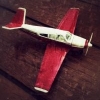
Sign in to follow this
Followers
0

Possible FSX Multi-Install Solution
By
Jimmy RFR, in MS FSX | FSX-SE Forum


By
Jimmy RFR, in MS FSX | FSX-SE Forum